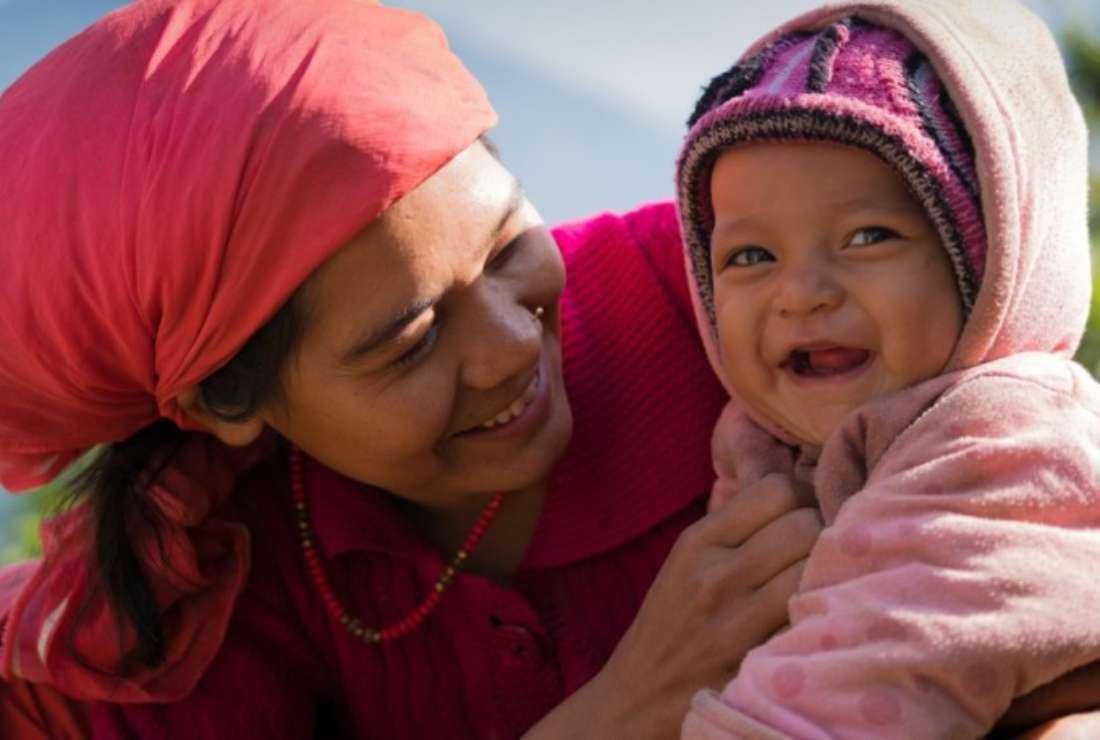
A Nepali mother is seen with her child. (Photo: Jacob Kassel/USAID Health for All Project)
When a 17-year-old girl at Sinja Rural Municipality in Jumla district gave birth to a premature baby in Shanigaun birthing center in June, her family was advised to immediately admit the baby to Karnali Academy of Health Sciences.
Born after seven months, the baby could not latch. Doctors suggested the baby be admitted to the Neonatal Intensive Care at the hospital to avoid any life-threatening risks.
The family, however, decided to take the baby home.
“The baby was referred to the academy, but the family took the baby home. The newborn died within 24 hours,” said Ramesh Rawal, in charge of the Shanigaun Health Post.
One of the reasons behind the premature birth was the mother’s young age, health workers said.
“Her [Sangita’s] uterus was not well developed, and her body could not provide a conducive environment for the fetus,” said Punam Rokaya, an auxiliary nursing midwife at the health post. “That’s why the baby was born prematurely.”
Sinja Rural Municipality had arranged for an ambulance for the mother and the newborn to be taken to the Karnali Academy of Health Sciences free of cost at the request of the Shanigaun Health Post.
“But the guardians were against taking the baby to the academy, claiming that the baby would be fine at home,” said Lalit Rokaya, chief of the health unit at Sinja Rural Municipality.
The rural municipality provided free ambulance service to 22 pregnant women and new mothers in the last fiscal year of 2022-23 and to 12 in the current fiscal year, Lalit said.
“We have been working relentlessly to reduce maternal and infant mortality. But the people are reluctant to go to well-facilitated hospitals due to their traditional mindset,” said Lalit.
Aaisa Upadhyaya, 19, from Kanakasundari Rural Municipality gave birth after eight months of pregnancy at Hadsinja Health Post.
The premature baby was weak and ailing at the time of birth. The health workers referred the newborn to the Karnali Academy of Health Sciences for treatment. The baby died in the course of treatment at the academy.
“We had referred the baby to the academy as the treatment was not possible at the health post. The baby suffered from pneumonia,” said Birendra Upadhyaya, the in-charge at Hadsinja Health Post.
He suspected that the baby died due to the delay in taking the baby to the hospital. It takes around four hours to reach the academy from Kanakasundari in an ambulance.
Priya Acharya, an auxiliary nursing midwife at Hadsinja Health Post, said giving birth at an early age and lack of nutritious food during pregnancy caused the premature birth and frail health condition of the newborn.
The 17-year-old girl and Upadhyaya are not the only unlucky mothers who lost their babies.
Many girls in rural Jumla give birth at an early age, resulting in the death of the newborns.
The infant mortality rate is alarming in Jumla, a mountain district of Karnali Province, mainly due to giving birth at an early age, lack of well-facilitated hospitals for safe delivery nearby, transportation issues, lack of awareness and financial crisis, health workers say.
As many as 29 infants below one month died in the district in the last fiscal year, according to the Public Health Service Office in Jumla.
“Twenty-three newborns died within seven days while five died between seven to 28 days. A newborn of seven days died at home,” said Padam Khatri, a data officer at the health office.
“Most of the cases are from the remote areas of the district. Child marriage and giving birth at an early age are the leading causes behind the rising infant mortality in the district,” said Khatri.
Government data showed as many as 320 women under the age of 20 years became mothers in the last fiscal year of 2022-23.
Chandannath Municipality was top on the list with a total of 127 underage mothers.
“Child marriage is still prevalent in the remote areas of Jumla due to lack of education, health awareness and poverty. Giving birth at an early age, unsafe abortion, unsafe delivery and malnutrition are the serious health problems in Jumla,” said Krishna Sapkota, chief of the Public Health Service Office in the district.
Nepal has committed to reducing the neonatal mortality rate to 12 per 1,000 live births by 2030.
However, the rate of newborn deaths has remained almost stagnant since 2016, according to the Nepal Demographic and Health Survey-2022.
A nationwide study carried out between January 5 and June 22 this year with technical and financial support from the United States Agency for International Development shows that currently, 21 children in every 1,000 live births die within a month.
The Nepalese government’s target for Sustainable Development Goals was to reduce neonatal mortality to 16 per 1,000 live births by 2022.
* This report is an edited version of a feature first published by the Kathmandu Post on Dec. 8, 2023.


